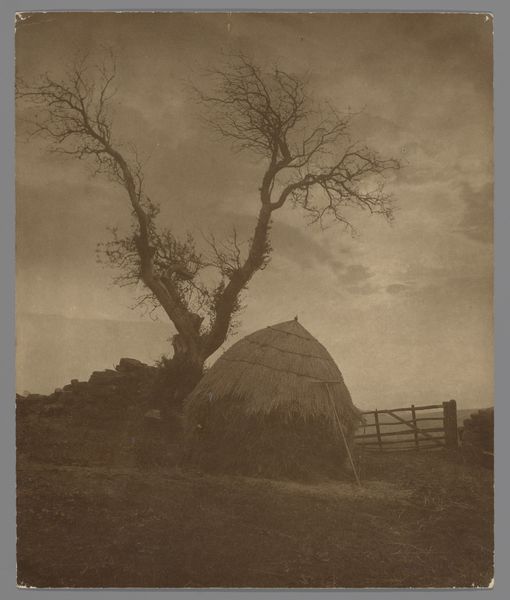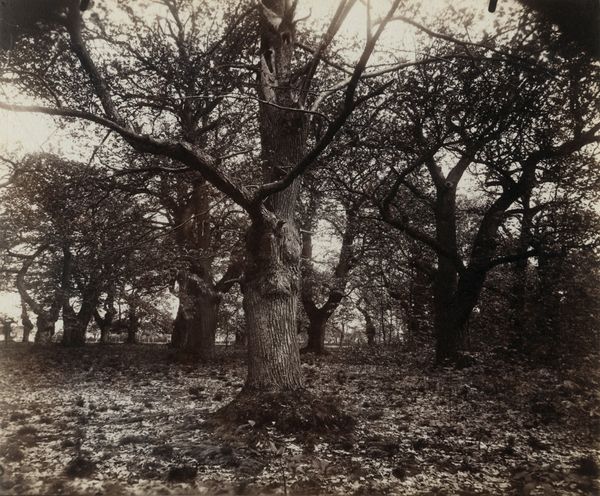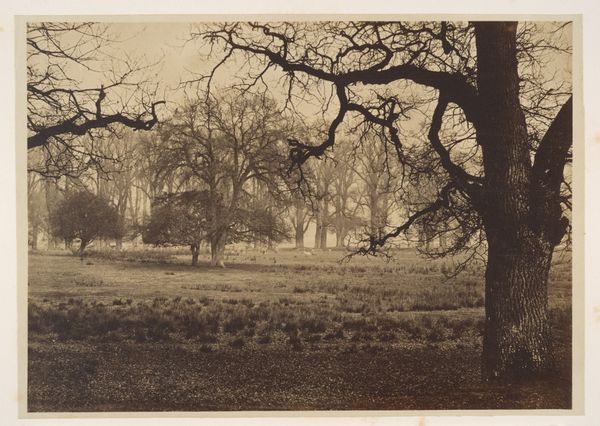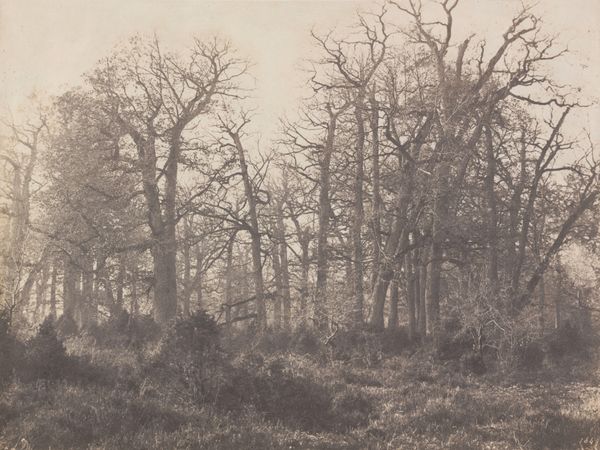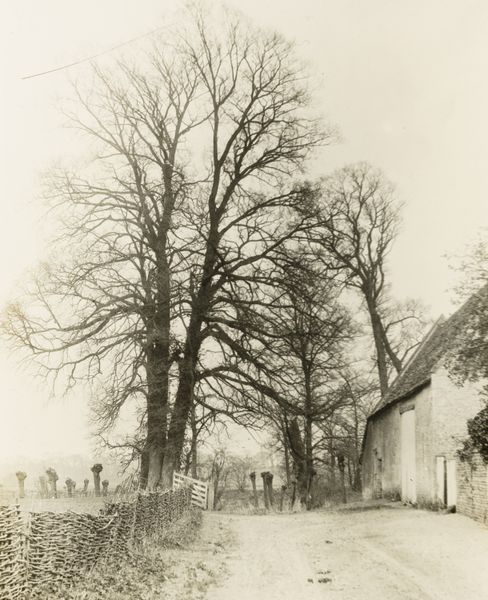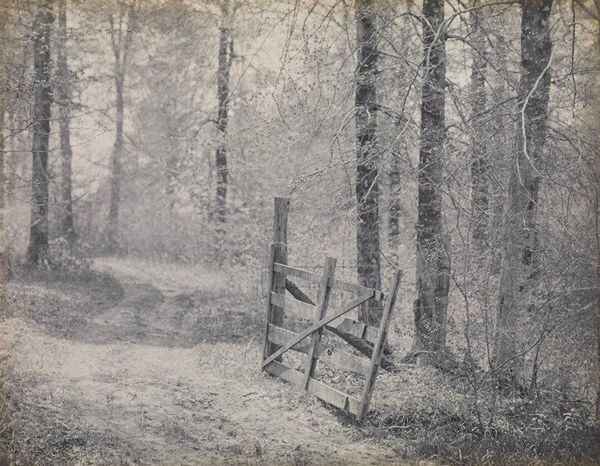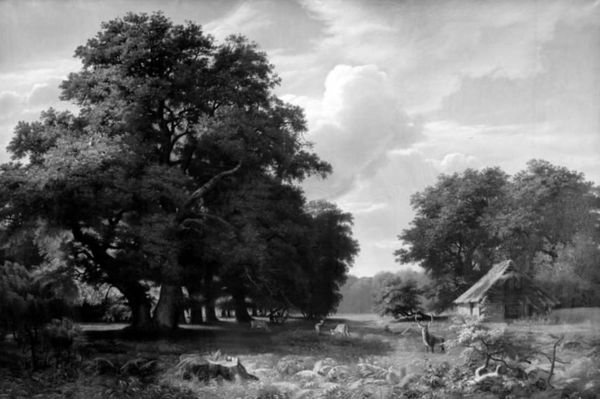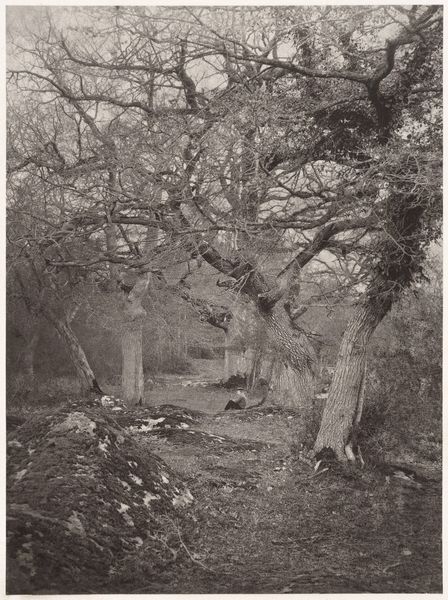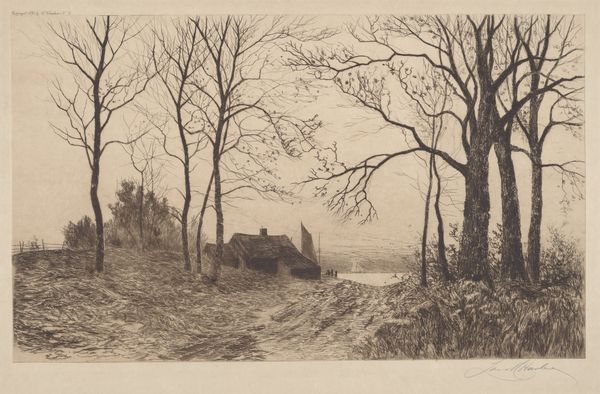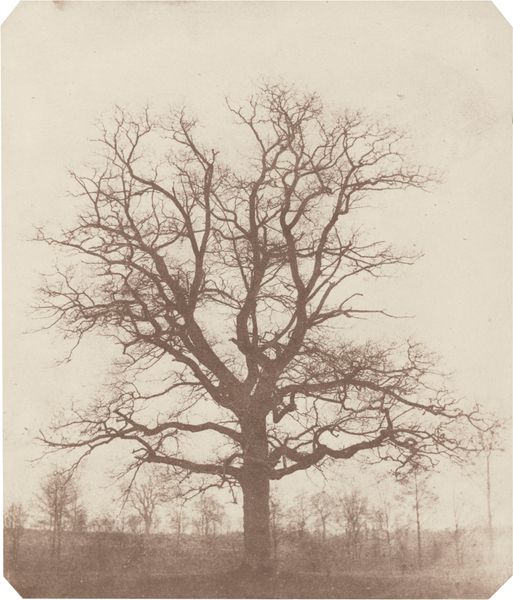
Dimensions: 26.5 × 34.3 cm (image); 26.9 × 34.7 cm (paper)
Copyright: Public Domain
Editor: Here we have Charles Job's "Old Shoreham," a gelatin-silver print from around 1891. There's a real sense of quiet solitude here. What do you see in this piece? Curator: I see a reflection of the late 19th-century anxieties around industrialization and urbanization, expressed through a longing for a simpler, rural past. The hazy, almost dreamlike quality of the photograph, achieved through the Pictorialist style, romanticizes that past. Note the limited tonal range; it emphasizes feeling over realism. Consider, too, what the deliberate blurring signifies: is it merely aesthetic, or is it also a commentary on memory, and how we idealize what’s gone? Editor: That's interesting. I was just thinking about the aesthetic qualities. But could it be arguing that our memories themselves are inherently "out of focus" or constructed? Curator: Precisely! And beyond that, who is included and excluded from this idyllic vision? These rural landscapes often conceal the labor and social hierarchies that sustained them. How might the absence of people here, aside from a lone bird, reinforce a certain bourgeois fantasy of escape, one blind to the realities of rural life for the working class? Editor: That’s a great point. I hadn’t thought about it in terms of exclusion. It does feel like a curated nostalgia. Curator: Yes, the artistry shapes the message. The romanticism becomes complex when we consider those whose stories aren't seen here. Perhaps "Old Shoreham" invites us to question whose history is being told, and at whose expense. Editor: I'm walking away with a much deeper appreciation, thinking about both what's visible and what's intentionally obscured. Curator: And that’s often where the richest dialogues begin. Looking at a photograph from multiple perspectives makes for a more complete experience.
Comments
No comments
Be the first to comment and join the conversation on the ultimate creative platform.
